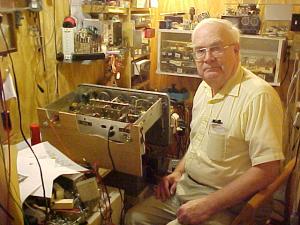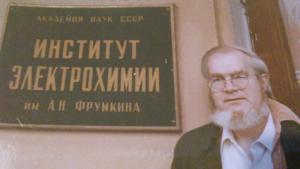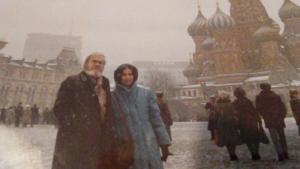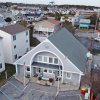Arthur Sowers: Former research scientist shares COVID-19 expertise
Arthur Sowers is used to working with big words and analogies.
Electron microscopy, erythrocyte membranes and dielectrophoretic microforces are just a few scientific words he used throughout three decades of scientific research.
Now retired in Harbeson with his wife, Jill Linden, Sowers hasn't stopped learning or writing about science.
An author of about 40 journal articles throughout his scientific career, Sowers wrote a letter to the editor March 13 about whether UV light can fight coronavirus. The roughly 500-word letter went viral, gaining nearly 80,000 views nationwide as people clamored to know more about the virus that had yet to become today's tragic pandemic.
While UV light can destroy the DNA in viruses, Sowers said, it can also destroy healthy DNA. He uses two analogies to help explain.
“It's like taking a shotgun and aiming it at stuff in your kitchen. You break up dishes, you break up cans of soup, you break up your sink. The question is, does that damage do more good or less good than doing something like developing a vaccine which targets the virus directly?” he said.
It's all about getting into the nitty-gritty of the science – but when you do, things are not so clear, Sowers said. Using a second analogy, he said, “It's sort of like, how do you kill a car? There are multiple pathways.”
Sowers uses another real-world analogy to explain what happens when the coronavirus invades the body. The virus is enveloped in a droplet of water that can be inhaled into the respiratory tract. Once inside, the virus attaches to a cell. “It buries itself, like if you take a chocolate chip and bury it into cookie dough,” he said.
The cell membrane breaks and the virus starts reproducing. “The virus takes over the cell machinery, and they go out of the cell,” he said. “Pretty soon you have thousands of millions of virus particles. It's like a volcano. If they get down to the lungs, then there's really serious problems.”
Sowers said scientists can't predict whether there will be a new strain of coronavirus after the latest one subsides, but the symptoms, at least, will probably be the same.
The key is getting antibodies to kill the virus antigens or toxins, he said. The corresponding analogy he uses involves putting a piece of double-sided tape on your finger to pick up dust, then getting rid of the dust by throwing away the tape. “The white cell is like your finger that comes along and grabs the tape, and the piece of tape is like the antibody. The dust particle is the antigen,” he said.
A life of science
Sowers grew up in Illinois and learned to love astronomy and electronics with encouragement from his parents – a housewife who read to him as a child, and a painter who helped him make his first telescope and spurred his love of ham radio. “It was like magic to me,” he said about the foreign broadcasts and other news he learned from the radio.
Entering the University of Illinois in the early 1960s, Sowers majored in physics and minored in biology, and was put on research duty while in the U.S. Army from 1967-69. There he researched the effects of radioactivity on plants, animals and everything else, as the United States considered using nuclear explosions to make a second Panama Canal. Safe to say a test ban treaty put an end to that endeavor.
Sowers left the Army and went back to school. He earned a PhD from Texas A&M in biology and embarked on a career of work in biomedical sciences. After working at University of North Carolina at Chapel Hill and University of Maryland in Baltimore, Sowers said he grew tired of fighting for grant money to do research. “Ninety-five percent of my time was writing grant proposals,” he said. “It just wasn't worth it.”
Now retired, he still has a passion for ham radio and science.
“We always liked the beach and decided to settle down. We bought the land and built a house,” he said. “Nowadays we're just staying away from COVID-19.”
Melissa Steele is a staff writer covering the state Legislature, government and police. Her newspaper career spans more than 30 years and includes working for the Delaware State News, Burlington County Times, The News Journal, Dover Post and Milford Beacon before coming to the Cape Gazette in 2012. Her work has received numerous awards, most notably a Pulitzer Prize-adjudicated investigative piece, and a runner-up for the MDDC James S. Keat Freedom of Information Award.























































